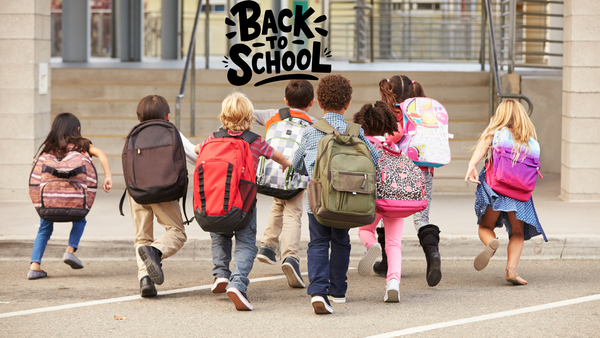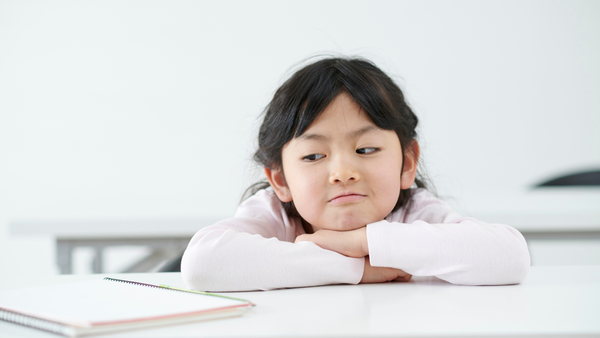How to Make Back-to-School Photo Sharing Safer for Your Family

Ideally, you wouldn’t share photos of your child online at all—kids deserve privacy and a clean digital slate. But we get it: you’re proud, and grandparents and friends want to see those first-day smiles. The first-day photo is a sweet tradition—new shoes, big grins, maybe a backpack almost as big as your child. Just remember: once a picture is online, the details can travel far beyond your circle.
If you do choose to share, this guide shows you how to do it more safely—what to watch for, how to lock down your posts, and simple, low-stress ways to celebrate the moment.
Did you know?
Surveys suggest about three in five parents post pictures of their children on social media, and many share roughly 300 photos of their child per year. That’s a lot of opportunities for small details to slip out.
Why those cute details can be risky
Back-to-school posts often bundle up personal clues without us noticing. A caption or chalkboard might include your child’s name, age, grade, teacher, and school. The photo can add more: a school logo on a shirt, a sign at the entrance, a house number on the door, a street sign on the corner, a bus stop down the road, even a license plate in a reflection.
On their own, these don’t feel sensitive. Together, they can reveal who your child is, where they’ll be, and when. If you also use your child’s details in passwords or security questions—name, school, teacher, mascot, birth year—you’ve handed out hints someone could use to guess or reset an account. Stacked up, those clues can help a stranger pinpoint daily routes, impersonate a trusted adult (“Your teacher Ms. Larsen sent me”), trick relatives with believable payment requests, or create convincing fake profiles. And because posts can be copied or scraped, the footprint can travel farther and last longer than you intended.
How to take and share a first-day photo safely
Before you snap the photo. Pick a neutral backdrop—a plain wall, a park bench, or your front door with the house number covered or cropped out. Hide school names and logos with a zipped jacket or by turning shirts inside out. Skip the chalkboard stats (or keep them generic with a simple “First day!”). Turn off geotagging so the picture doesn’t carry GPS data. Do a quick reflection check—windows, mirrors, and shiny car doors can reveal plates, street names, or neighbours.
When you post. Share later, not live, so you’re not broadcasting where you are right now. Keep the audience small—use Friends only, a close-friends list, or a private album for grandparents. Avoid routine details in captions, and protect other kids’ privacy by asking parents before you post, or by cropping/blurring classmates.
Give your privacy settings a quick tune-up.
- Set your default audience to Friends; make Public the exception.
- Remove phone numbers, addresses, and birthdays from anything strangers can see.
- Require approval before anyone can tag you or your child.
- Prefer private spaces for family updates: a shared iCloud/Google Photos album, a private WhatsApp/Signal group, or a private cloud folder.
Tip: Use your profile’s “View as public” to check what strangers can see.
Related: How to Stay Scam-Free During Back-to-School Season
If you shared more than you meant to
If too much got out, act quickly and keep it friendly.
- Edit or delete the post, or replace it with a cropped version that hides names, logos, or house numbers.
- Change the audience from Public to Friends, or move the picture into a private album and share that link instead.
- Send a polite request to anyone who reshared: “I overshared a detail in that photo—could you delete your repost or switch it to friends-only? I’ve uploaded a safer version here.”
- Then tighten your own settings: use strong, unique passwords, turn on two-factor authentication, and avoid security questions that use school or teacher names.
- Take a quick scroll through older posts and remove anything that reveals routines or locations.
- Going forward, post the safer version first and gently remind your circle not to pass it along.
Related: Digital Parenting After Divorce: How to Agree on Protecting Your Kids Online
Safer ways to share the joy
Keep first-day photos in a smaller circle with close-friends stories, private albums for grandparents, or simple one-to-one swaps. If you do post, keep captions light on personal details and ask family not to repost or tag the kids publicly.
Add a quiet safety net behind the scenes, too. Bitdefender Family Plans—the family versions of Total Security, Premium Security, and Ultimate Security—extend the protection you’d choose for yourself to everyone at home. You get parental controls to set healthy routines and filter age-inappropriate content; phishing and scam protection that blocks risky links before anyone taps; breach alerts if an email or password tied to your family shows up in a leak and a built-in VPN to keep browsing and photo sharing private on school Wi-Fi and on the go.
One subscription covers the household, with one place to manage it all. You focus on your kids and the moments that matter—while staying safe.
Choose your safety plan, here.
tags
Author
Cristina Popov is a Denmark-based content creator and small business owner who has been writing for Bitdefender since 2017, making cybersecurity feel more human and less overwhelming.
View all postsRight now Top posts
How Do You Manage Your Passwords? We Ask Netizens
December 18, 2025
Cybercriminals Use Fake Leonardo DiCaprio Film Torrent to Spread Agent Tesla Malware
December 11, 2025
FOLLOW US ON SOCIAL MEDIA
You might also like
Bookmarks









